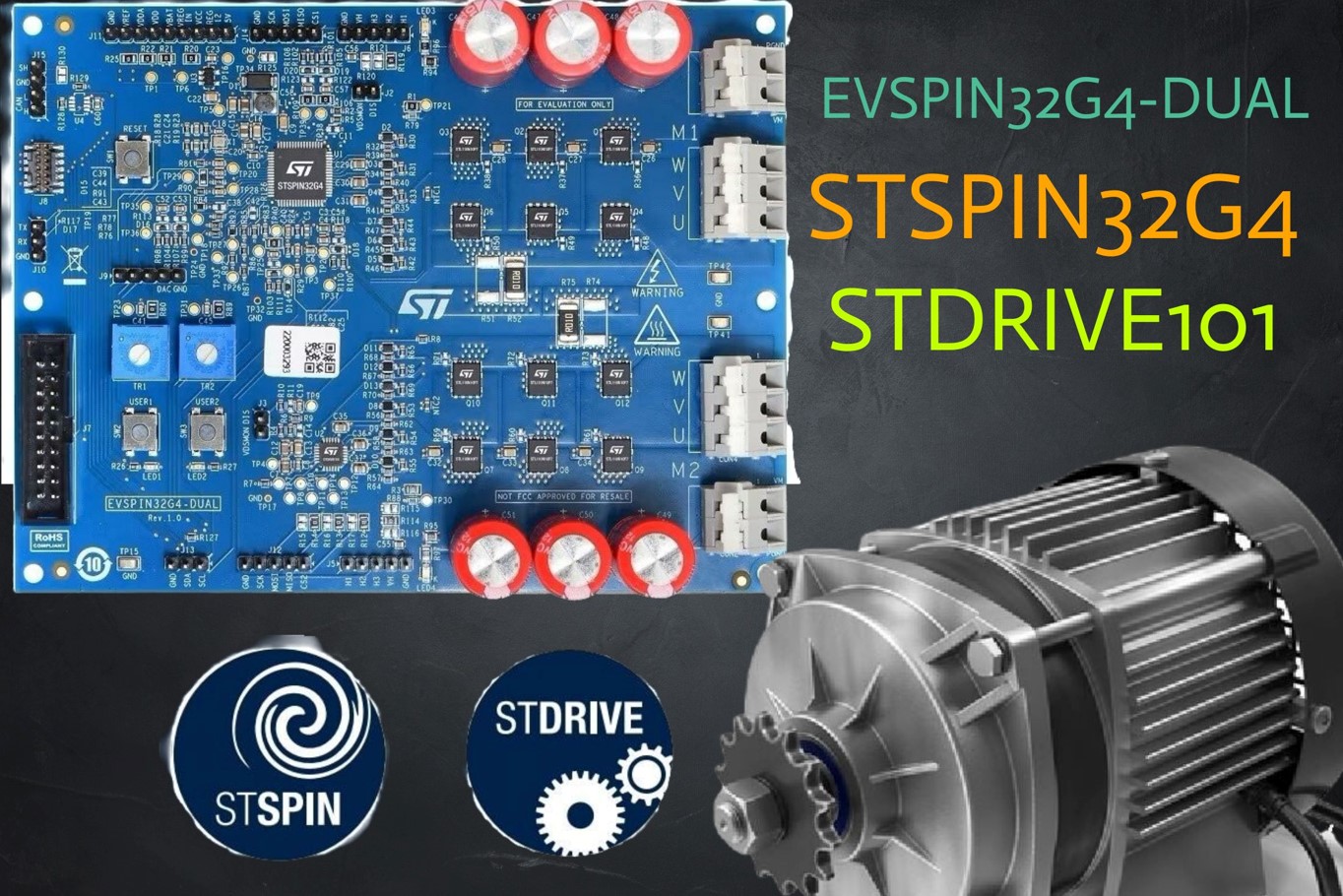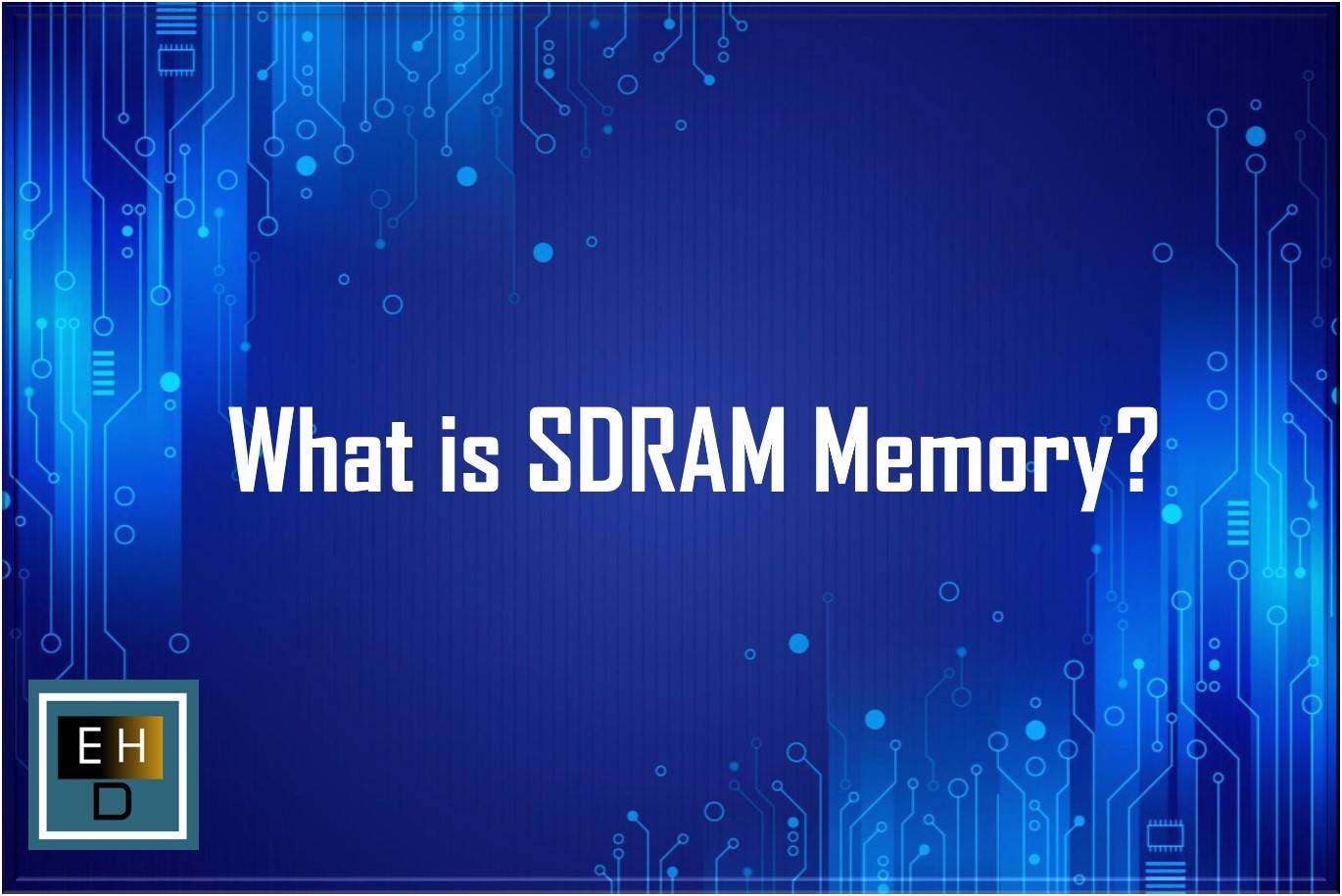STMicroelectronics has launched the EVSPIN32G4-DUAL demonstration board, an innovative solution designed to control two motors simultaneously using the highly integrated STSPIN32G4 motor controller and STDRIVE101 triple half-bridge gate driver. This new board is set to accelerate product development for advanced industrial and consumer applications by leveraging the STM32 ecosystem, simplifying PCB design, and reducing the bill of materials (BOM).

At the heart of the EVSPIN32G4-DUAL is the STSPIN32G4, a system-in-package that integrates a triple high-performance half-bridge gate driver and a mixed-signal STM32G431 microcontroller within a compact 9×9 mm VFQFPN package. The STSPIN32G4 features a wealth of programmable functions, making it a versatile solution for various motor control applications.
The STSPIN32G4 motor controller is engineered to handle demanding motor control tasks. It includes two power stages based on STL110N10F7 power MOSFETs, which can operate simultaneously with up to 10 Arms output current and 74 V supply. This setup provides robust monitoring capabilities for temperature, bus voltage, and drain-source voltage sensing of the power MOSFETs, along with overcurrent protection.
The board supports sensorless operation with single-shunt current sensing, utilizing the operational amplifiers embedded in the STSPIN32G4. It also accommodates sensor-based control algorithms through dedicated inputs for each motor, compatible with Hall sensors, quadrature encoders, or absolute encoders with an SSI communication interface.
The EVSPIN32G4-DUAL board boasts integrated voltage regulators that generate both gate driver and control logic supplies from the motors’ power supplies, eliminating the need for additional circuitry. This integration facilitates easier design and more efficient power management.
The board is designed for seamless integration into complex motion control systems, with predisposition for CAN bus communication, enabling easy connection with master or slave modules. The comprehensive set of communication interfaces includes I²C, SPI, and UART, offering flexible connectivity options.
The STSPIN32G4 motor controller features a high-performance 32-bit ARM Cortex-M4 MCU with FPU, operating at up to 170 MHz. It includes a CORDIC mathematical hardware accelerator for trigonometric functions, 128 KB flash memory with proprietary code readout protection (PCROP), and 32 KB SRAM with hardware parity check. The controller is equipped with advanced timers, ultra-fast rail-to-rail comparators, operational amplifiers, and a high-precision voltage reference.
The integrated VCC buck converter, capable of up to 200 mA with programmable output, along with a 3.3 V LDO linear regulator, ensures reliable power supply for both the gate drivers and control logic. Additionally, the STSPIN32G4 includes multiple protection features, such as thermal shutdown, short-circuit, and overload protections.
Complementing the STSPIN32G4, the STDRIVE101 is a triple half-bridge gate driver housed in a compact 4×4 mm VFQPN package. It features 75 V rated gate drivers with 600 mA sink/source current and embedded bootstrap diodes. The STDRIVE101 offers two input strategies, adjustable deadtime generation, and very short propagation delay, making it ideal for high-speed motor control applications. It also includes a 12 V LDO linear regulator and comprehensive protection features like UVLO and thermal shutdown.
The board ensures robust monitoring and protection for the power stages, featuring drain-source voltage sensing for each power MOSFET and overcurrent protection. The integrated NTC sensors enable precise temperature monitoring of the power stages.
The STSPIN32G4 provides unprecedented flexibility in motor control, supporting various control algorithms, including sensorless and sensored Field Oriented Control (FOC) with one, two, or three shunts, as well as traditional six-step control mode. The integrated hardware VDS monitoring circuitry protects against overvoltage by switching off all gate driver outputs if an overvoltage is detected.
The STSPIN32G4’s flexible power management structure generates all required supplies from the motor supply voltage (VM), with an embedded programmable buck regulator and a high-precision LDO. These regulators ensure efficient and reliable operation, with the option to bypass them and provide external supplies if needed.
The integrated STM32G431VBx3 microcontroller, based on the ARM Cortex-M4 core, features a rich set of peripherals ideal for advanced motor control. It includes fast 12-bit ADCs, comparators, operational amplifiers, DAC channels, timers, high-speed memories, GPIOs, and mathematical function accelerators (CORDIC and FMAC). The microcontroller supports various power-saving modes and an extended temperature range, ensuring stable operation in demanding industrial environments.
By integrating the STSPIN32G4 with an additional external three-phase driver like the STDRIVE101, the EVSPIN32G4-DUAL board can efficiently drive two independent 3-phase BLDC motors, offering significant BOM savings and application optimization.
The STSPIN32G4 is part of the STM32 ecosystem, which offers extensive support for application development. This includes tools for project initiation, middleware packs, and software examples. The X-CUBE-MCSDK (motor control software development kit) provides firmware libraries for algorithms such as FOC and includes the STM32 motor-control workbench. This user-friendly graphical tool allows users to select and automatically configure the EVSPIN32G4-DUAL directly from a menu.
EVSPIN32G4-DUAL is available now from www.st.com and distributors, for $145.
Author Profile
- 20+ years embedded hardware design professional with a burning passion for teaching. Sharing the intricate world of embedded hardware is my mission and joy.
Latest entries
 Tech Updates30 November 2025STM32WBA6: The Next-Generation MCU Powering Secure Short-Range Wireless Designs
Tech Updates30 November 2025STM32WBA6: The Next-Generation MCU Powering Secure Short-Range Wireless Designs Blogs24 November 2025High-Speed PCB Layout Design Guide-104
Blogs24 November 2025High-Speed PCB Layout Design Guide-104 Tech Updates14 September 2025Renesas Launches RL78/L23 Ultra-Low-Power MCUs to Power Smarter Home Appliances
Tech Updates14 September 2025Renesas Launches RL78/L23 Ultra-Low-Power MCUs to Power Smarter Home Appliances Blogs7 September 2025High-Speed PCB Layout Design Guide-103
Blogs7 September 2025High-Speed PCB Layout Design Guide-103











